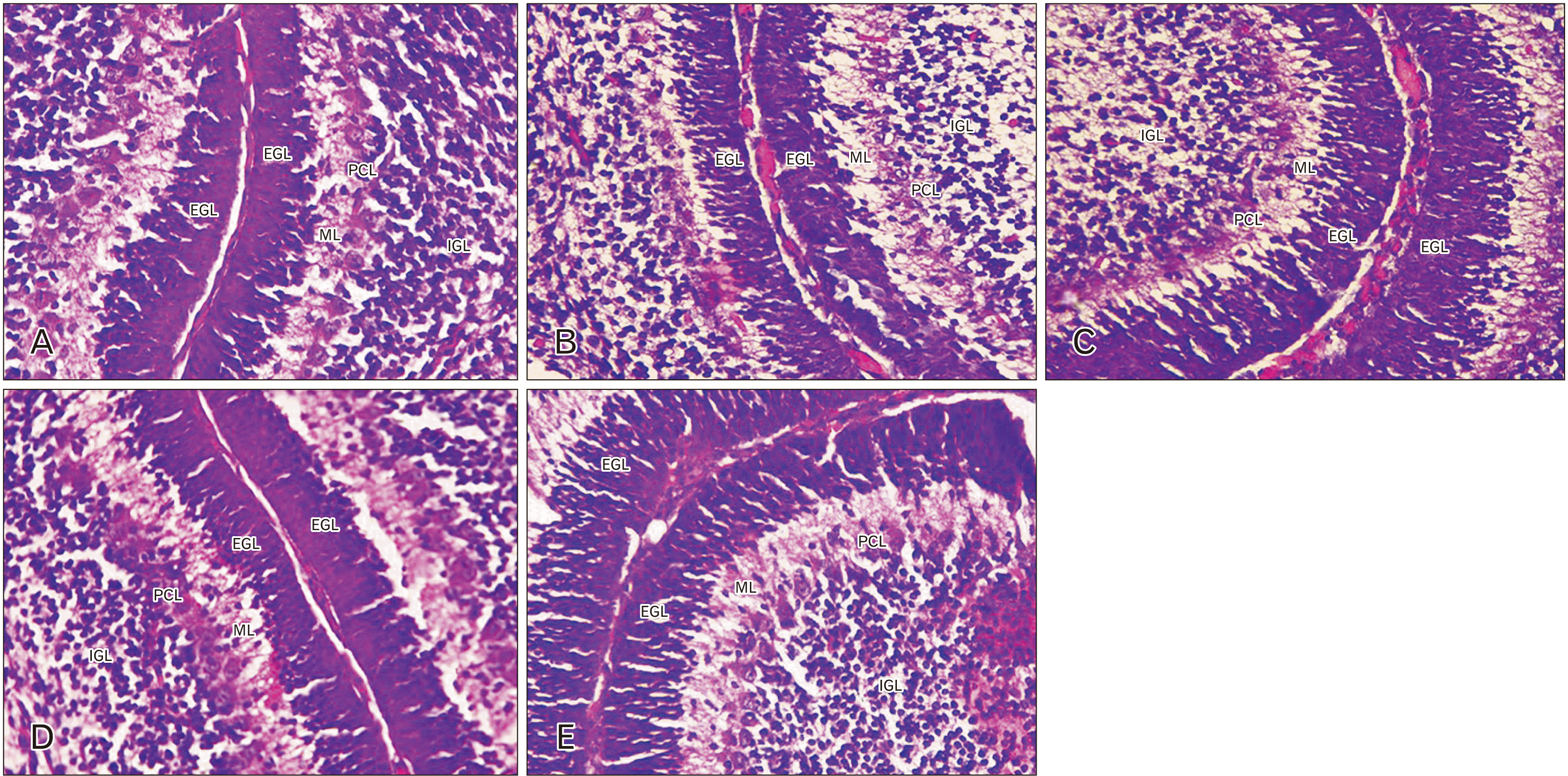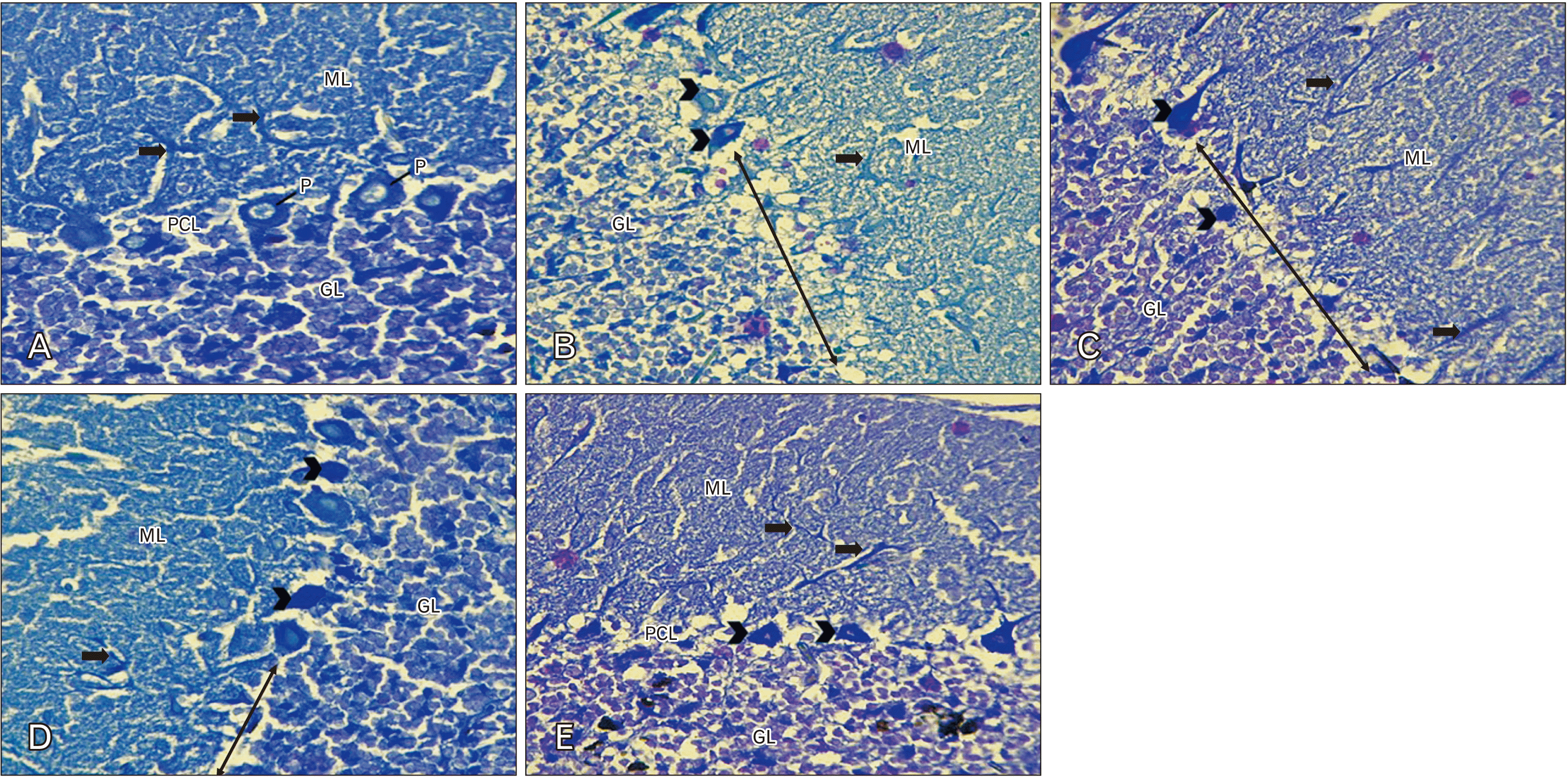1. Tietz T, Lenzner A, Kolbaum AE, Zellmer S, Riebeling C, Gürtler R, Jung C, Kappenstein O, Tentschert J, Giulbudagian M, Merkel S, Pirow R, Lindtner O, Tralau T, Schäfer B, Laux P, Greiner M, Lampen A, Luch A, Wittkowski R, Hensel A. 2019; Aggregated aluminium exposure: risk assessment for the general population. Arch Toxicol. 93:3503–21. DOI:
10.1007/s00204-019-02599-z. PMID:
31659427.

4. Shirley DG, Lote CJ. 2005; Renal handling of aluminium. Nephron Physiol. 101:p99–103. DOI:
10.1159/000088331. PMID:
16174991.

5. Al-Hazmi MA, Rawi SM, Hamza RZ. 2021; Biochemical, histological, and neuro-physiological effects of long-term aluminum chloride exposure in rats. Metab Brain Dis. 36:429–36. DOI:
10.1007/s11011-020-00664-6. PMID:
33404936.

6. Golub MS, Gershwin ME, Donald JM, Negri S, Keen CL. 1987; Maternal and developmental toxicity of chronic aluminum exposure in mice. Fundam Appl Toxicol. 8:346–57. DOI:
10.1016/0272-0590(87)90084-4. PMID:
3569705.

7. Martinez CS, Vera G, Ocio JAU, Peçanha FM, Vassallo DV, Miguel M, Wiggers GA. 2018; Aluminum exposure for 60days at an equivalent human dietary level promotes peripheral dysfunction in rats. J Inorg Biochem. 181:169–76. DOI:
10.1016/j.jinorgbio.2017.08.011. PMID:
28865725.
8. Golub MS, Germann SL. 2001; Long-term consequences of developmental exposure to aluminum in a suboptimal diet for growth and behavior of Swiss Webster mice. Neurotoxicol Teratol. 23:365–72. DOI:
10.1016/S0892-0362(01)00144-1. PMID:
11485839.

9. Morris G, Puri BK, Frye RE. 2017; The putative role of environmental aluminium in the development of chronic neuropathology in adults and children. How strong is the evidence and what could be the mechanisms involved? Metab Brain Dis. 32:1335–55. DOI:
10.1007/s11011-017-0077-2. PMID:
28752219. PMCID:
PMC5596046.

11. Adekeye AO, Irawo GJ, Fafure AA. 2020;
Ficus exasperata Vahl leaves extract attenuates motor deficit in vanadium-induced parkinsonism mice. Anat Cell Biol. 53:183–93. DOI:
10.5115/acb.19.205. PMID:
32647086. PMCID:
PMC7343565.

12. El-Bassouny DR, Omar NM, Khalaf HA, Al-Salam RAA. 2021; Role of nuclear factor-kappa B in bleomycin induced pulmonary fibrosis and the probable alleviating role of ginsenoside: histological, immunohistochemical, and biochemical study. Anat Cell Biol. 54:448–64. DOI:
10.5115/acb.21.068. PMID:
34936986. PMCID:
PMC8693141.

13. Abdelrahman GH, Mariod AA. Mariod A, editor. 2019.
Tamarindus indica: phytochemical constituents, bioactive compounds and traditional and medicinal uses. Wild Fruits: Composition, Nutritional Value and Products. Springer;Cham: p. 229–38. DOI:
10.1007/978-3-030-31885-7_19.
14. Panara K, Harisha CR, Shukla VJ. 2014; Pharmacognostic and phytochemical evaluation of fruit pulp of Tamarindus Indica linn. Int J Ayurvedic Med. 5:37–42.
16. Ajiboye BO, Ojo OA, Okesola MA, Oyinloye BE, Kappo AP. 2018; Ethyl acetate leaf fraction of
Cnidoscolus aconitifolius (Mill.) I. M. Johnst: antioxidant potential, inhibitory activities of key enzymes on carbohydrate metabolism, cholinergic, monoaminergic, purinergic, and chemical fingerprinting. Int J Food Prop. 21:1697–715. DOI:
10.1080/10942912.2018.1504787.
17. Paccola CC, Resende CG, Stumpp T, Miraglia SM, Cipriano I. 2013; The rat estrous cycle revisited: a quantitative and qualitative analysis. Anim Reprod. 10:677–83.
18. Marcondes FK, Bianchi FJ, Tanno AP. 2002; Determination of the estrous cycle phases of rats: some helpful considerations. Braz J Biol. 62:609–14. DOI:
10.1590/S1519-69842002000400008. PMID:
12659010.

19. Yener T, Turkkani Tunc A, Aslan H, Aytan H, Cantug Caliskan A. 2007; Determination of oestrous cycle of the rats by direct examination: how reliable? Anat Histol Embryol. 36:75–7. DOI:
10.1111/j.1439-0264.2006.00743.x. PMID:
17266672.

20. Chinoy NJ, Sorathia HP, Jhala DD. 2005; Fluoride+aluminium induced toxicity in mice testis with giant cells and its reversal by vitamin C. Fluoride. 38:109–14.
21. Elizabeth MA, Samson P, Itohan OR. 2020; Histomorphological evaluations on the frontal cortex extrapyramidal cell layer following administration of N-Acetyl cysteine in aluminum induced neurodegeneration rat model. Metab Brain Dis. 35:829–39. DOI:
10.1007/s11011-020-00556-9. PMID:
32212044. PMCID:
PMC7220982.

22. Stanley JL, Lincoln RJ, Brown TA, McDonald LM, Dawson GR, Reynolds DS. 2005; The mouse beam walking assay offers improved sensitivity over the mouse rotarod in determining motor coordination deficits induced by benzodiazepines. J Psychopharmacol. 19:221–7. DOI:
10.1177/0269881105051524. PMID:
15888506.

23. Kasozi KI, Namubiru S, Safiriyu AA, Ninsiima HI, Nakimbugwe D, Namayanja M, Valladares MB. 2018; Grain amaranth is associated with improved hepatic and renal calcium metabolism in type 2 diabetes mellitus of male wistar rats. Evid Based Complement Alternat Med. 2018:4098942. DOI:
10.1155/2018/4098942. PMID:
30420893. PMCID:
PMC6211157.

24. Usman IM, Iliya IA, Ivang AE, Ssempijja F, Ojewale AO, Yusuf HR. 2019; Microanatomical and biochemical changes of the cerebellum following ethanol gavage in adult Wistar rats. Anat J Afr. 8:1662–9. DOI:
10.4314/aja.v8i2.189708.

27. Gomes-Leal W, Corkill DJ, Freire MA, Picanço-Diniz CW, Perry VH. 2004; Astrocytosis, microglia activation, oligodendrocyte degeneration, and pyknosis following acute spinal cord injury. Exp Neurol. 190:456–67. DOI:
10.1016/j.expneurol.2004.06.028. PMID:
15530884.

28. Fedchenko N, Reifenrath J. 2014; Different approaches for interpretation and reporting of immunohistochemistry analysis results in the bone tissue - a review. Diagn Pathol. 9:221. DOI:
10.1186/s13000-014-0221-9. PMID:
25432701. PMCID:
PMC4260254.

29. Archibong VB, Ekanem TB, Igiri AO, Lemuel AM, Usman IM, Okesina AA, Obosi NJ. 2020; Immunohistochemical studies of codeine medication on the prefrontal cortex and cerebellum of adult Wistar rats. Cogent Med. 7:1824390. DOI:
10.1080/2331205X.2020.1824390.

31. Rankin J, Manning A. 1993; Alterations to the pattern of ultrasonic calling after prenatal exposure to aluminium sulfate. Behav Neural Biol. 59:136–42. DOI:
10.1016/0163-1047(93)90860-K. PMID:
8476381.

32. Muller G, Bernuzzi V, Desor D, Hutin MF, Burnel D, Lehr PR. 1990; Developmental alterations in offspring of female rats orally intoxicated by aluminum lactate at different gestation periods. Teratology. 42:253–61. DOI:
10.1002/tera.1420420309. PMID:
2274891.

33. Röllin HB, Nogueira C, Olutola B, Channa K, Odland JØ. 2018; Prenatal exposure to aluminum and status of selected essential trace elements in rural South African women at delivery. Int J Environ Res Public Health. 15:1494. DOI:
10.3390/ijerph15071494. PMID:
30011954. PMCID:
PMC6068832.

34. Fernandes RM, Nascimento PC, Martins MK, Aragão WAB, Rivera LFS, Bittencourt LO, Cartágenes SC, Crespo-Lopez ME, do Socorro Ferraz Maia C, Lima RR. 2021; Evaluation of cerebellar function and integrity of adult rats after long-term exposure to aluminum at equivalent urban region consumption concentrations. Biol Trace Elem Res. 199:1425–36. DOI:
10.1007/s12011-020-02244-2. PMID:
32564201.

35. Reichert KP, Schetinger MRC, Pillat MM, Bottari NB, Palma TV, Gutierres JM, Ulrich H, Andrade CM, Exley C, Morsch VMM. 2019; Aluminum affects neural phenotype determination of embryonic neural progenitor cells. Arch Toxicol. 93:2515–24. DOI:
10.1007/s00204-019-02522-6. PMID:
31363819.

36. Butts T, Green MJ, Wingate RJ. 2014; Development of the cerebellum: simple steps to make a 'little brain'. Development. 141:4031–41. DOI:
10.1242/dev.106559. PMID:
25336734.

37. Allam A, Abdul-Hamid M, Allam G, Al-hroob A, Ibraheem G, Alsubaie M. 2013; Perinatal ethyl alcohol effects on the development of cerebellar cortex in albino rat. Afr J Pharm Pharmacol. 7:1293–301. DOI:
10.5897/AJPP12.1191.

38. Ulfanov O, Cil N, Adiguzel E. 2020; Protective effects of vitamin E on aluminium sulphate-induced testicular damage. Toxicol Ind Health. 36:215–27. DOI:
10.1177/0748233720919663. PMID:
32330100.

39. Wang M, Ruan DY, Chen JT, Xu YZ. 2002; Lack of effects of vitamin E on aluminium-induced deficit of synaptic plasticity in rat dentate gyrus
in vivo. Food Chem Toxicol. 40:471–8. DOI:
10.1016/S0278-6915(01)00094-1. PMID:
11893406.








 PDF
PDF Citation
Citation Print
Print



 XML Download
XML Download